Reinjection for resilience
Ormat Technologies has been exploring the benefits of non-condensable gas (NCG) reinjection on geothermal production performance. This case study highlights the practical application of numerical simulation to demonstrate the impact of NCG reinjection on long-term reservoir sustainability and project performance, based on the Stanford Geothermal Workshop paper “Quantifying the Benefit of NCG Reinjection on Geothermal Production Performance” by John Murphy, Eitan Berger, Michael Berger, Anton Fiterman, and Simon Webbison.
The NCG dilemma
NCGs occur naturally in geothermal systems and can support production by reducing fluid density in the wellbore. However, without NCG reinjection, reservoir concentrations of NCGs decline over time, reducing production well outputs. The challenge was to quantify the benefit of NCG reinjection on geothermal production performance, demonstrate its feasibility across a wide range of initial reservoir conditions and quantify the impact to generation due to parasitic load when reinjecting NCGs.
Simulating the system
A combined reservoir engineering and plant process analysis was conducted using numerical simulation. The simulation was developed in the Volsung simulator suite, enabling the coupling of reservoir simulation to wellbore models and surface equipment. The model considered two hypothetical reservoirs with initial production temperatures of 203°C and 235°C and initial production CO2 mass fractions ranging from 0.5 to 3 wt%.
Related content:
- * Forty Years of Production from the Steamboat Geothermal Field
- * Numerical modelling with Volsung and Leapfrog
- * Geothermal asset optimisation with Volsung geothermal modelling
- * Accelerate investment decisions with Volsung’s predictive insights
- * Volsung’s tracer particle modelling: challenges, solutions, and next steps
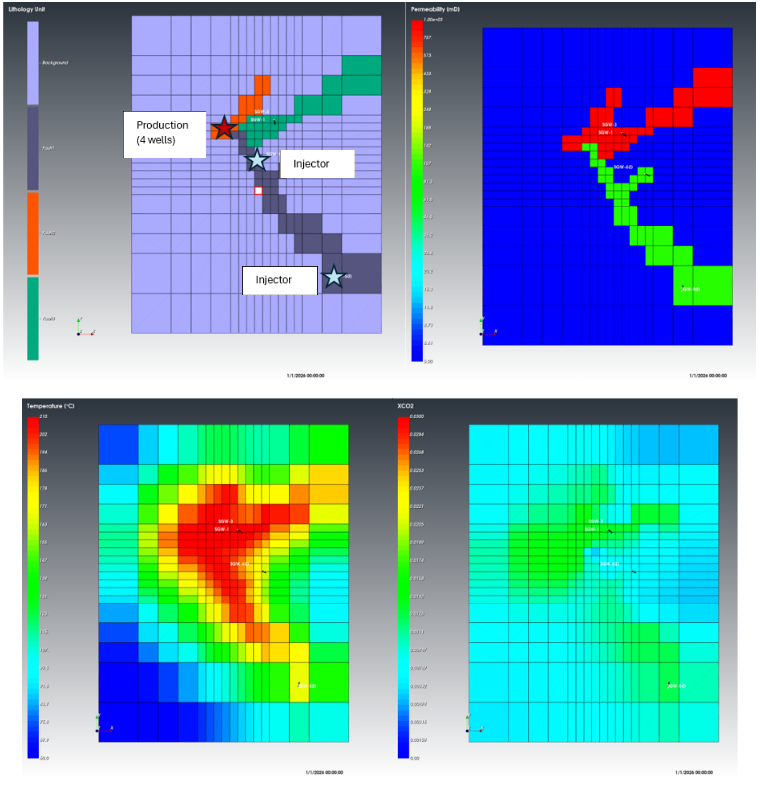
Model Configuration at Upflow/Outflow Connection showing clockwise from upper left: Rock Type assignment, Horizontal Permeability (md), CO2 mass fraction, Initial State Temperature (°C). Moderate enthalpy case is shown (203 °C production temperature), with identical permeability structure used for the high enthalpy case.
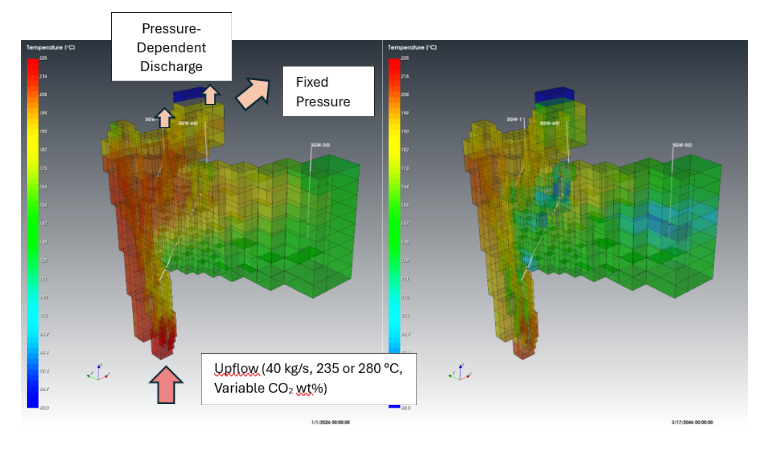
View from Southwest on Permeable Gridblocks showing Temperature at Initial State (left) and after 20 years of Operations (right), 2.5 wt%, 235 °C Upflow, No Reinjection Case
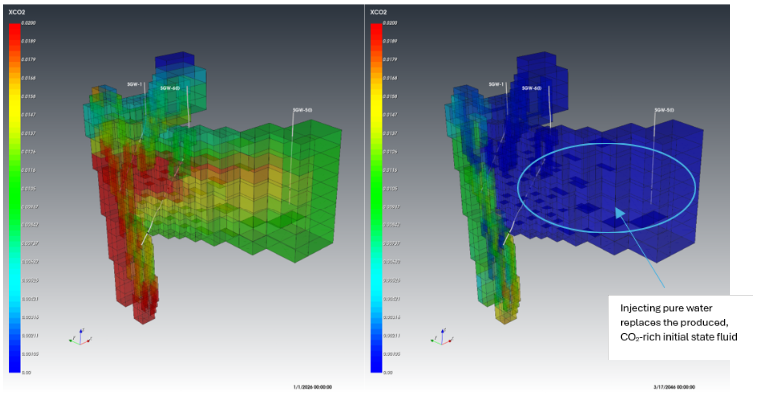
View from Southwest on Permeable Gridblocks showing CO2 Mass Fraction at Initial State (left) and after 20 Years of Operations (right), 2.5 wt% Moderate Enthalpy Upflow No Reinjection Case
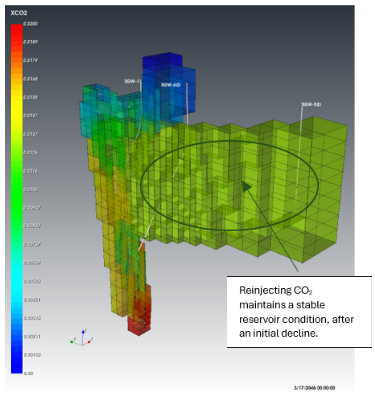
CO2 Mass Fraction after 20 Years of Production, 2.5 wt%, Moderate Enthalpy Upflow with Reinjection of CO2
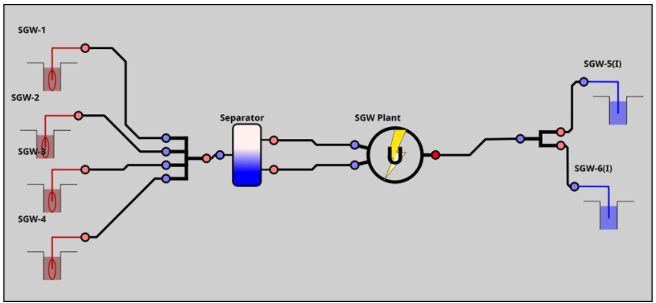
Simulated Plant Configuration. The SGW Plant uses Ormat generation calculations to reach a target generation, throttling wells where needed. Generation declines when the four producers cannot meet the flow target. Reinjection of CO2 is simulated by setting the plant outlet CO2 wt% equal to inlet CO2 wt%. Parasitic load for NCG compression and injection booster pumps can be introduced as a function of total flow, injection temperature, and CO2 flow.
Real-world impact
The numerical simulation demonstrated that with reinjection of NCGs, production from self-flowing wells could be sustained longer than if NCGs were released. The simulation showed that reinjecting NCGs reduced the rate of NCG decline in the production reservoir, thereby reducing the rate of production decline. The model also considered practical considerations for NCG reinjection in the context of an operating binary power plant, technology which typically makes for simpler NCG reinjection.
Insights & impact
The application of NCG reinjection across many reservoir conditions is predicted to result in:
- Prolonged well deliverability and increased generation through the life of an operating field.
- Significantly reduced greenhouse gas emissions.
- Small or zero additional parasitic load with appropriate plant equipment.
”This numerical simulation has provided valuable insights into the benefits of NCG reinjection, which we think can be applied across a wide range geothermal reservoir conditions.
John MurphyResource Manager – Modeling, Ormat Technologies
A sustainable path forward
This numerical simulation has demonstrated that NCG reinjection is beneficial to long-term reservoir sustainability and project performance. By leveraging advanced simulation features, Ormat Technologies has gained valuable insights into the potential for NCG reinjection, guiding resource and surface equipment decisions for operating plants and future developments.

Reservoir Performance vs Time for Moderate Enthalpy Model
Solid Lines are without NCG Reinjection and Dashed are 100% NCG Reinjection
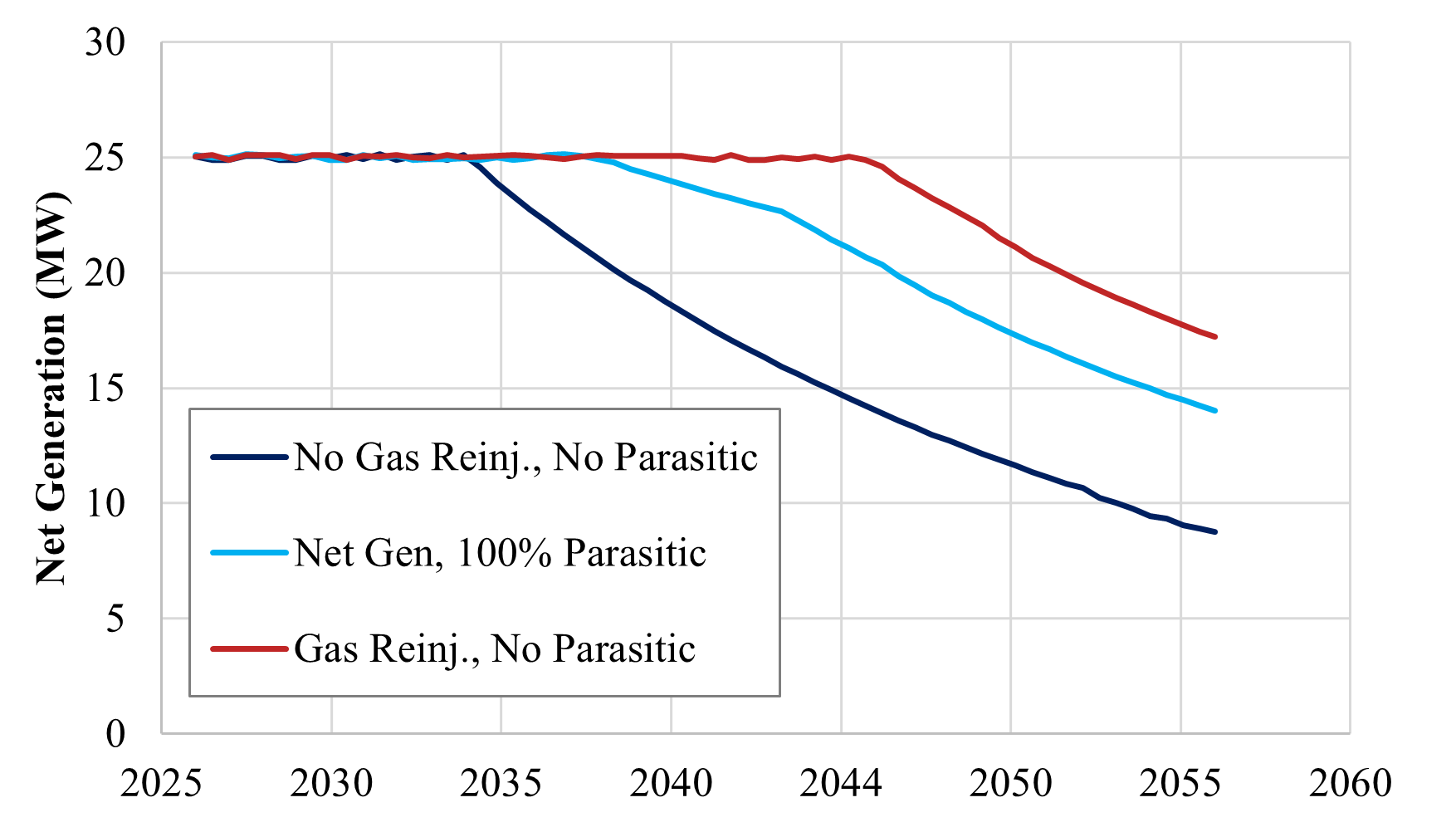
Benefit of NCG Reinjection, with and without Compression Parasitic
Moderate Enthalpy Case at 2.5 wt% Upflow
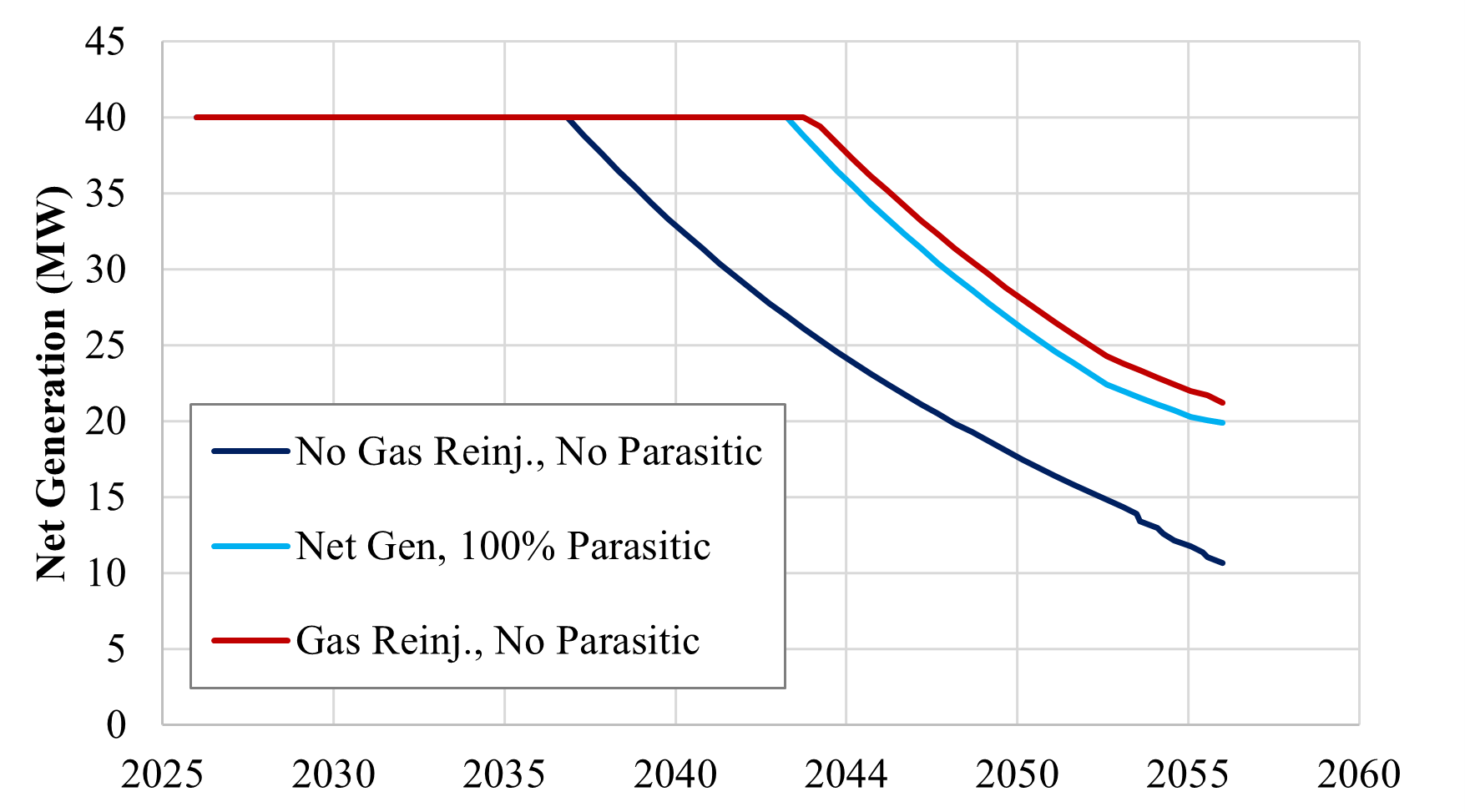
Benefit of NCG Reinjection, with and without Compression Parasitic
High Enthalpy Case at 2.5 wt% Upflow Results




